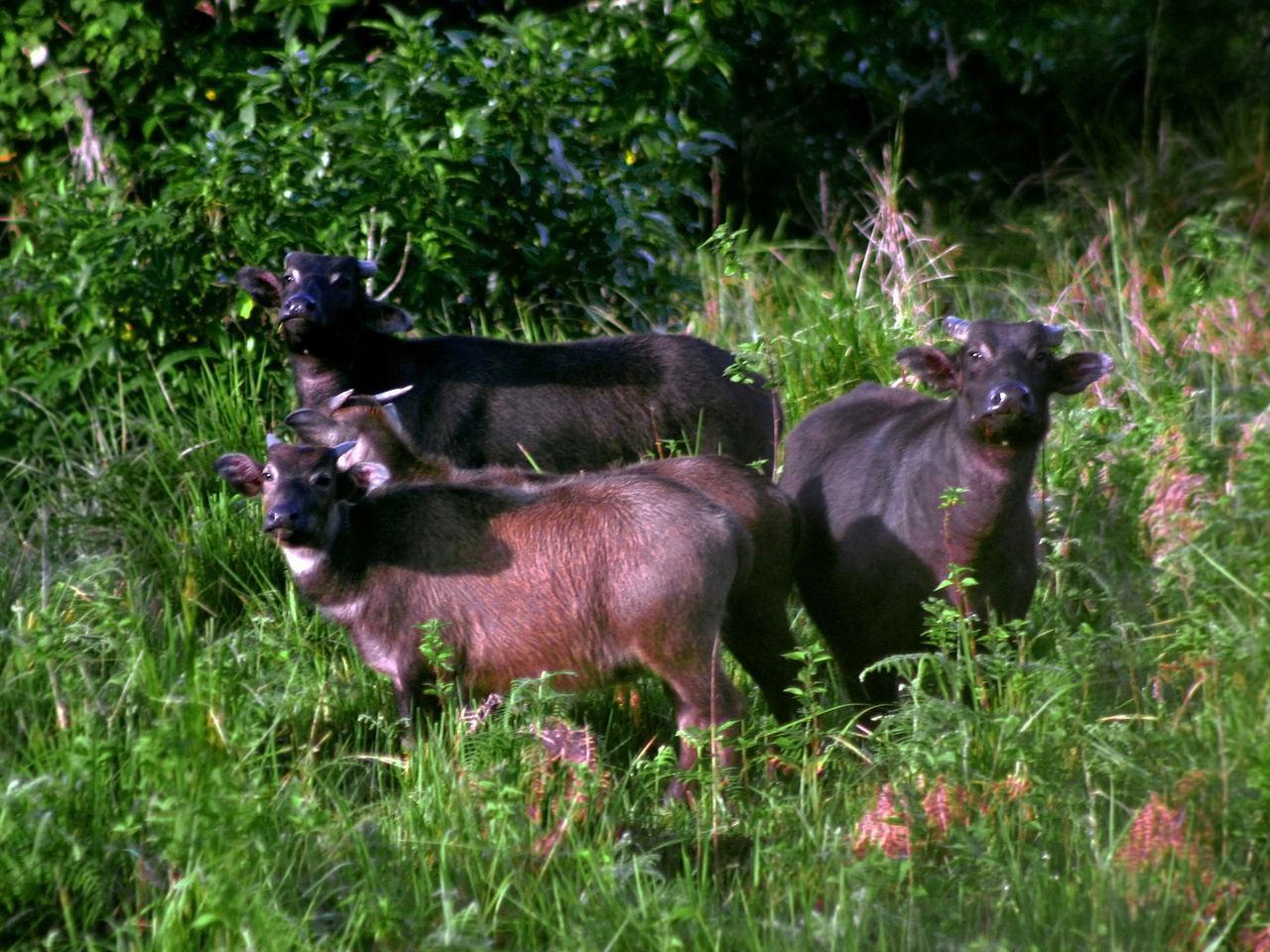
The Tamaraw or Bubalus Mindorensis (also known as Anoa Mindorensis) is a small water buffalo that is grayish in color and has a pair of straight, stout horns. Popularly called as Mindoro Dwarf Buffalo, they are endemic to the island of Mindoro in the Philippines. These pygmy buffalos are one of the world's rarest animals. Due to the continuous decrease of their population, they are now classified as Critically Endangered species or C1.

Characteristics
Tamaraws are relatively smaller than water buffalos. They have shorter limbs and stocky appearance. They are hairier than the carabaos (Bubalus Bubalis), which are water buffalos found all over the Philippines. Their skulls are fairly massive, elongated and narrow. They have squarish molars and have long and straight snouts. An adult Tamaraw weighs about 200 to 300 kilograms, is 220 centimeters in length and has an average height between 95 and 120 centimeters. All Bubalus Mindorensis have a pair of straight and pointy horns. Males have longer and thicker horns than those of females. Their small and stocky size equips them to push and graze through thick forests and their short strong limbs enable them to climb through high steep mountains.
Behavior
Tamaraws have now become nocturnal due to constant commotions caused by humans during the day. They feed on open grass and rest on tall shady trees and grasses in a dense jungle. They are solitary species with mother and child as their only lasting association. Bubalus Mindorensis are known for their aggressiveness and fierceness when threatened or cornered.

Habitat
Tamaraws dwells in dense, lowlands with thick grassy planes, marshy areas and shallow rivers. They usually graze and feed only on short grasses such as Cynodon arcuatus, Digitaria sanguinalis, Eleusine indica, Sorghum nitidum, Paspalum scrobiculatum, Alloteropsis semialata, and Vetiveria zizanoides. They also eat young bamboo leaves and shoots.
Reproduction
Females usually gestate from 8 to 10 months which results in one offspring on a rainy season in the Philippines (from June to November). Newborn Tamaraws have reddish brown color and dark brown legs. As they grow, their color gradually changes to light brown and slowly darkens again as they become adults (approximately between 3 to 4 years). Females prefer not to be seen by anyone when caring for their offspring. Their juveniles usually stay with their mothers from two to four years.
Distribution
Tamaraws can only be found in Mindoro Island, Philippines. Today, these rare species are distributed in three areas. These are Mount Iglit-Baco National Park, Mount Aruyan/Sablayan, and Mount Calavite Tamaraw Preserve. A confined breeding program was established in Mount Iglit-Baco National Park on 1982. Regrettably, since very few calves were born, the program was not successful.
Conservation
Currently, their status is under the critically endangered species. During the 1900s, Tamaraw population are well under 10,000. However, due to Rinderpest (cattle plague) that rose in the 1930s, their population greatly decreased. They have continuously declined because of cattle hunts, ranchers and settlers initiated by humans. The Philippine government declared a legislation that will protect and conserve all Tamaraws in Mindoro Island, this is also known as the Tamaraw Conservation Program. From 10,000 Tamaraws, there are approximately 273 remaining today.










